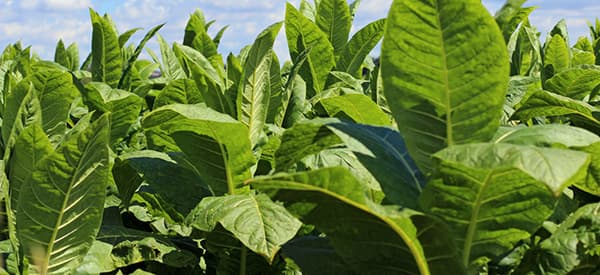
Indian Tobacco
Indian tobacco (Lobelia inflata) is an annual plant with a controversial reputation and a rich history. It has many homeopathic repertories and is considered one of the most valuable herbal remedies ever discovered. The herb contains fourteen different compounds that make it a powerful herbal medicine. For many centuries, Indian tobacco was used for treating respiratory disorders. It is also a good herb to help in smoking cessation as it can provide nicotine-like stimulation.
However, despite its many herbal benefits, Indian tobacco is considered a notorious herb because of its possible toxicity. However, the extent of this toxicity is still not established by present studies. Thus, it is advised to exercise due precaution before taking this herb. Accordingly, lobelia leaf is toxic between 0.6 to 1 gram and can be fatal at 4 grams.
The history of Indian tobacco can be traced to different Native American tribes who first used the herb. The Iroquois used it for treating venereal diseases and ulcers. The Cherokees smoked lobelia to relieve chest congestion and cough, while the Crows often used it for their religious ceremonies. Indian tobacco reached Europe in the 18th century and was used for medicinal purposes by botanist and healer Samuel Thompson. He was accused of poisoning Ezra Lovette with the herb but was later acquitted of the crime.
Where Indian Tobacco Is Found
Indian tobacco is native to Eastern North America and often spans the regions near Southeastern Canada. They are also found in the east as far as Alabama, and Kansas in the west. Indian tobacco grows abundantly in open woodlands, creeks, abandoned fields, and savannahs. They may grow in pastures but are often avoided by cattle except in accidental ingestion, which can cause serious poisoning.
⇒ The Complete Map of Edible Plants: Find Out What You Have in Your Area! (Video)
How To Identify Indian Tobacco
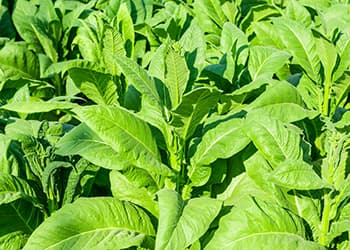
Indian tobacco is considered a weed in many gardens. In some places, however, it is cultivated as an ornamental plant with attractive purple flowers. Lobelia colors may vary according to their variety of cultivars. But, the Indian tobacco is distinguishable by its irregularly-shaped purple to blue tubular flowers.
Leaves. Indian tobacco has green, simple, and alternate leaves. These leaves are lance to ovate-shaped and are scattered in the upper stem while the base leaves form a rosette. It also has scarcely-toothed margins.
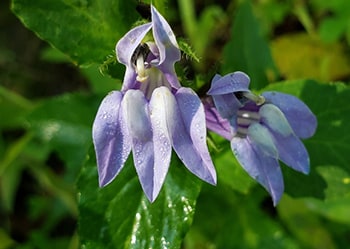 Flowers. The flowers of Indian tobacco are tubular with two lips and five spreading lobes. The two upper lobes that form the lips are erect while the remaining lobes spread into a fan. The tube has a white interior with patches of yellow and tufts of fine white hairs.
Flowers. The flowers of Indian tobacco are tubular with two lips and five spreading lobes. The two upper lobes that form the lips are erect while the remaining lobes spread into a fan. The tube has a white interior with patches of yellow and tufts of fine white hairs.
Fruit and Seeds. After summer, the flowers of the Indian tobacco mature into fruits, forming a small inflated seedpod. It measures about 1/3 of an inch and is enclosed in a green calyx. It has a seed capsule divided into two cells containing tiny numerous yellow-brown seeds.
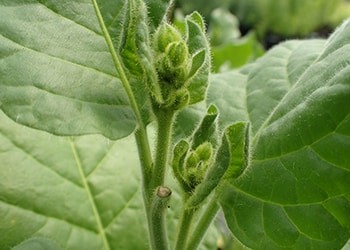
Roots. The roots of lobelia are the most toxic part of the plant. It has a taproot system that grows vertically downward with many roots sprouting laterally.
Stem. Indian tobacco is an erect and herbaceous plant that grows from about 15 to 100 cm. The stems are angular and covered with tiny and bristly hairs. The hairs are sparse as it moves up the upper stem.
⇒ Plant Identification Guide – 400 Wild Plants That You Can Forage For (Video)
Lobelia inflata is an herbaceous plant of the Campanulaceae or bellflower family. It is commonly known as Indian tobacco, Lobelia, Puke weed, Asthma weed, Gagroot, Vomitwort, Bladderpod, or Eyebright.
The herb was named after Belgian botanist Matthias de l’Obel. Its specific name inflata came from the character of its inflated capsules. The common name Indian tobacco refers to the shape of the flower resembling the tobacco pouch used by Indians.
The genus Lobelia has about 360 to 400 different species, where L. inflata is the most popular. Other species considered for landscaping are:
- cardinalis with red flowers
- erinus
- puberula
- siphilitica
- spicata
How To Grow Indian Tobacco
Indian tobacco is naturally a wild plant that is cultivated commercially for its volatile oils. They are propagated through cuttings or grown from seeds. Starting the plant from seeds needs patience as the plant tends to have long germination. But once the plant has established itself, it is adaptable to many environments, including drought or flooding. The tiny seeds also self-sow and can spread in many places when carried by the wind.
Lobelia fares well in full sun and tolerates partial shade. They grow abundantly in USDA hardiness zones 2 to 8.
Growing Indian Tobacco from Seeds
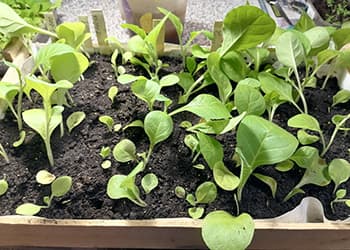 Indian tobacco seeds are too tiny. Thus, they need finely sifted soil to germinate successfully. You may plant them directly in the garden or containers around 10 to 12 weeks before the last frost. Sowing the seeds is best during mid-spring to fall.
Indian tobacco seeds are too tiny. Thus, they need finely sifted soil to germinate successfully. You may plant them directly in the garden or containers around 10 to 12 weeks before the last frost. Sowing the seeds is best during mid-spring to fall.
Scatter the Indian tobacco seeds lightly in a container of rich and fine soil. Keep the soil moist until the seedlings emerge.
Transplant the Indian tobacco seedlings only when they are about two to three inches tall. Space the plants at 4 to 6 inches when transplanting. Keep the patches well-weeded for the plants to thrive better. During dry summers, irrigating them twice a week is sufficient.
Growing Indian Tobacco from Cuttings
Growing lobelia from cuttings is the quickest way of propagating it. If you have the parent plant, choose a cutting from new growth and not from the stem that already produced flowers. Choose a 4 to 5 inches new growth of stem with nodes.
Plant the cutting in wet potting soil, with half of the stem above. Place the container in a shady area and keep it very moist. The new plant is ready for transplanting when new foliage begins to show. When the plants resist a gentle tug, it means that the roots have developed and are ready for transplanting.
⇒ Stopped Spending Money At The Pharmacy By Growing These 10 Plants (Video)
Plant Care and Maintenance
Lobelia is a wild plant, and by nature, it can resist many environmental conditions. The plant does not need deadheading, but it may help if you want to keep it aesthetically pleasing. It thrives near wetlands and thus, it can grow better with constant moisture but not overwatered.
The plant is highly pest and animal-repellent and is not hounded with plant disease issues. Here is a simple guide to growing a healthy Indian tobacco plant:
- Full sun to partial shade
- Well-watered but not too soggy
- Rich and moist soil
- General-purpose fertilizer every four to six weeks
How To Harvest Indian Tobacco
Indian tobacco is mostly grown in home gardens as an ornamental and bug-repellent plant. Commercially, it is harvested for its oils and used in manufacturing other herbal supplements.
Lobelia is presently tagged poisonous, and thus, has no culinary value at all.
When harvesting for oil, the best season is in the mid to late summer when the seed pods have matured. It is the time when the plant produces an oil with maximum potency.
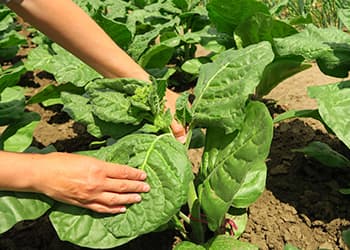
Harvest the Indian tobacco by cutting the above-ground parts of the plant. Cut the stem and leave the roots intact to ensure future re-growth. Choose mature lobelia over the younger plants.
After harvesting, remove all foreign matter from the plant and spread them in thin layers outdoor to dry. Cover them during the night to prevent the dew from setting on the drying herb. You may also choose to dry them indoors in a well-ventilated and dry place. You can add a heat source or fan to speed up the drying. Turn the herb once in a while to ensure that they dry out uniformly.
The herb is completely dry when the stem snaps and the leaves crumble. Place the dried Indian tobacco in a dry place until ready to sell or use. Do not keep them in plastic to prevent moisture that enables mold growth.
What Indian Tobacco Is Good For And Natural Remedies Made From It
Indian tobacco is also known as the puke weed owing to its emetic property. It is administered to induce vomiting that may clear toxins from the stomach. That makes lobelia a valuable herb in food poisoning and relief from excessive alcohol consumption.
For many centuries, native Americans used Indian tobacco for treating respiratory problems. Its expectorant property helps clear the respiratory tract of phlegm to cure cough and chest congestion. That is why it is widely used for relieving bronchitis, whooping cough, and pneumonia. Indian tobacco is also beneficial in managing the symptoms of chronic asthma.
Another notable use of Indian tobacco is its worth in easing tobacco withdrawal. It was traditionally used by people who want to break the habit of smoking. Indian Tobacco works as its lobeline content stimulates dopamine release when used alone. It reduces the release caused by addictive substances, thereby, reducing the impact of nicotine and its addictive property.
Additionally, Indian tobacco’s release of dopamine is beneficial for treating anxiety and depression.
In very low doses, Indian tobacco may also act as a relaxant that eases muscular tension and cures spasms.
⇒ Similar to Morphine: The Best Natural Painkiller that Grows in Your Backyard (Video)
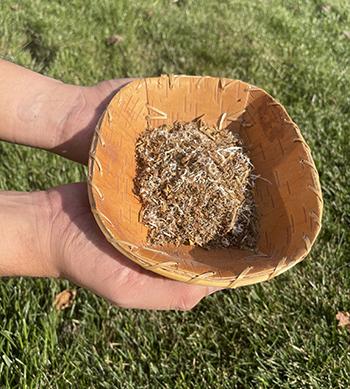
The ayurvedic uses of Indian tobacco are traditionally focused on treating the following conditions among others:
- Respiratory issues
- Ulcers, abscesses, and sores
- Muscle and joint problems
- Toxic poisoning
- Smoking cessation
- Depression
- Skin diseases and insect bites
- Sprains and swelling
- Epilepsy and convulsion
What Parts Of Indian Tobacco Are Used For Remedies?
The above-ground portion of the Indian tobacco, especially the leaves and seeds, is used for medicine. Its roots are mostly not used because it has a high concentration of toxic compounds. Meanwhile, the dried leaves are used for smoking. However, it is used in small amounts and often blended with other herbs.
The most effective and safe way of consuming Indian tobacco is through its available medicinal form. Its quantity and dosage are controlled to avoid excessive intake that can otherwise become fatal.
Lobelia is available in the following form for oral and topical uses: capsules, extract, tincture, ointment, cream, or salve.
Lobelia Liniment
Ingredients
- 2 heaping tbsp or Indian tobacco aerial parts (dried or fresh)
- 1 qt water, rubbing alcohol, or apple cider vinegar as a menstruum
Steps
- Cut and sift the Indian tobacco or lobelia.

- Steep it into the desired menstruum for 30 to 60 minutes. I used water in this recipe because I personally find rubbing alcohol to drying on the skin, and the vinegar too sticky.

- Strain the herb from the menstruum into a dry and clean jar or spray bottle. Don’t forget to label accordingly with the date and herb preparation.

How to use this remedy
You can apply this remedy topically for back, muscle tension, aching joints, and other body discomforts. You may also use it as a relaxing body rub for a good night’s sleep. Use this liniment externally on unbroken skin if you are using rubbing alcohol.
What Plants Resemble Indian Tobacco
| Features | Indian Tobacco (Lobelia inflata) | Bluebell (Hyacinthoides non-scripta) | Bugle Weed (Ajuga reptans) |
|---|---|---|---|
 | 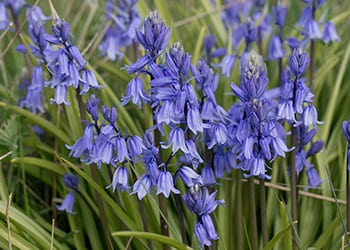 | 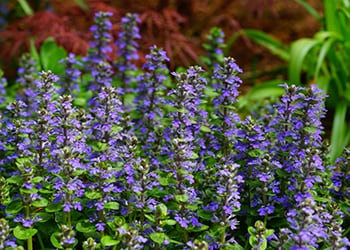 | |
| Size | 15 to 100 cm | 30 to 45 cm | 10 to 35 cm |
| Leaves | Green; simple; alternate; lance to ovate; basal rosette; with margins | Linear; simple; strap-shaped | Purple to green; simple; alternate; hairy |
| Flowers | Bluish to purple; tubular; 2 erect lips and 3 lower fans | Tubular or bell shaped; blue/violet/pink/white; recurved petals | Blue; five lobes; short tubular |
| Fruits/Seeds | Small; inflated seedpods; tiny and numerous yellow-brown seeds | Papery capsule; green to light brown; small seeds | Dry fruit with four chambers |
| Stem | Erect; angular; with bristly hairs; herbaceous | Bulbous | Herbaceous; angular; bristly hairs on lower stem |
| Scent | Slightly irritating odor | Green floral; intoxicating | Pine-scented leaves |
Warnings And Cautions
Indian tobacco is potentially toxic and should be taken in a low amount under medical supervision. It is not recommended for pregnant women, breastfeeding mothers, and children.
The herb is likely unsafe for most people and will trigger side effects like nausea, vomiting, diarrhea, dizziness, and tremors. At high dosages, lobelia can cause more serious effects like convulsion, fast heartbeat, very low blood pressure, coma, or death.
People with stomach and intestinal problems and heart diseases should not consume Indian tobacco in any form.
Lobelia is a diuretic that interacts with and prevents the absorption of lithium. If you are taking lithium, talk to your doctor before taking Indian tobacco.
When using any herbal supplements, always get your doctor’s advice especially if you are taking maintenance medicine. Herbal remedies often interact with drugs and other herbs and can cause significant side effects. To be safe, ask for your doctors’ advice on its safe dose and possible interactions.
You may also like:
A Simple “At-Home” Protocol for the Flu and Other Respiratory Issues (Video)
So-Called Medicinal Plants that Are Actually Dangerous

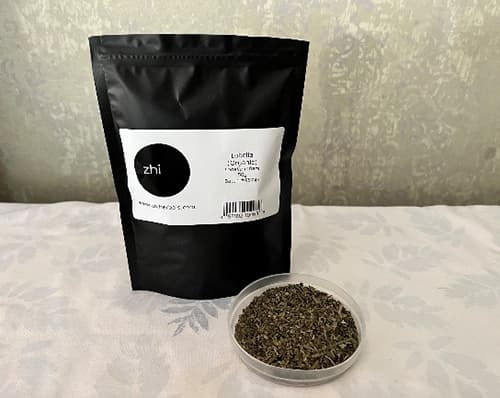
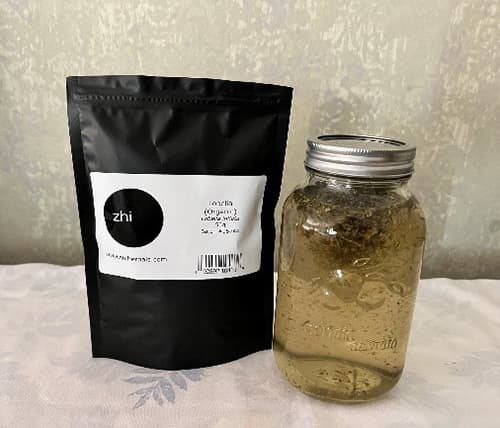
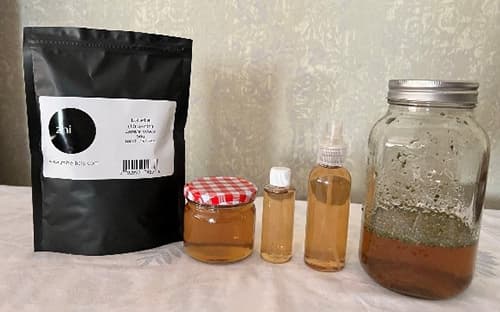

IT IS ALSO A GREAT DEWROMER… IN THE COUNTRY.. FOR FARM ANIMALS.. BUT ALSO THE LEAVES IS THE TRUE CHEW.. FOR PEOPLE THAT LIKE TO CHEW AND SPIT… BUT CANCER OF THE MONTH AND NECK AND NASAL CAVTAY. ALSO POPS UP ALSO..
Hello. How do you use as a deformed for your farm animals? That would be great to have an alternative t to harsh chemicals! Sharon